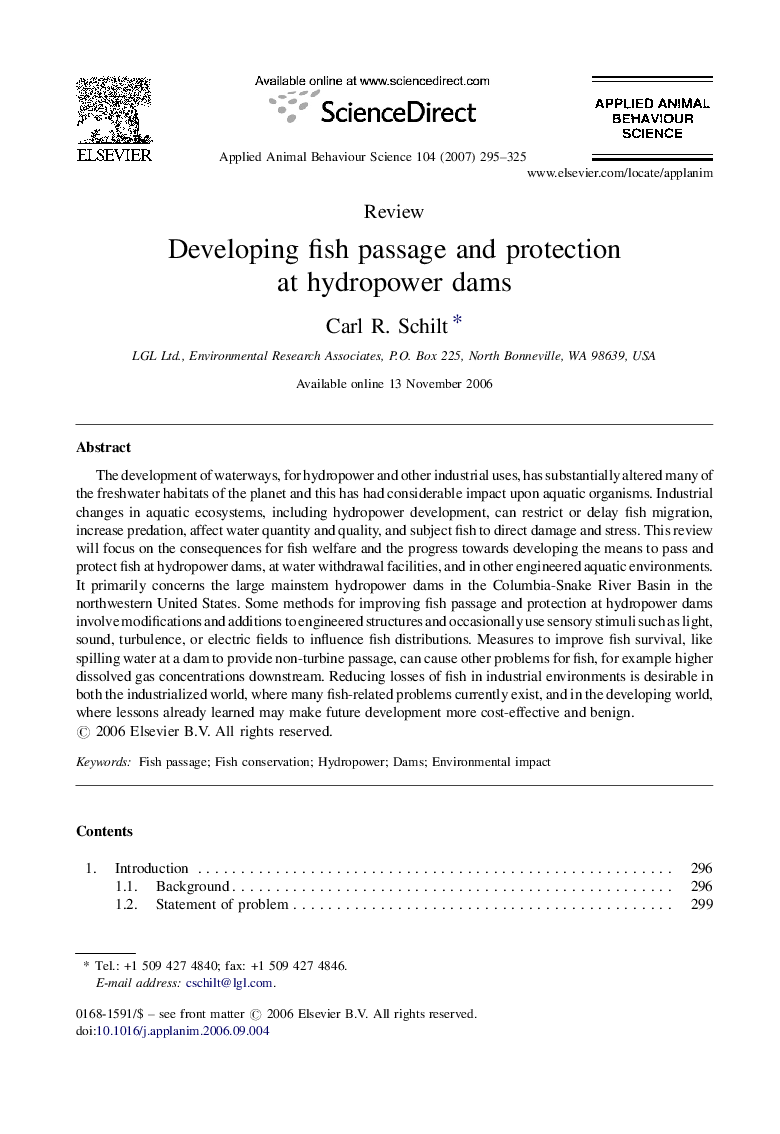| Article ID | Journal | Published Year | Pages | File Type |
|---|---|---|---|---|
| 4523959 | Applied Animal Behaviour Science | 2007 | 31 Pages |
The development of waterways, for hydropower and other industrial uses, has substantially altered many of the freshwater habitats of the planet and this has had considerable impact upon aquatic organisms. Industrial changes in aquatic ecosystems, including hydropower development, can restrict or delay fish migration, increase predation, affect water quantity and quality, and subject fish to direct damage and stress. This review will focus on the consequences for fish welfare and the progress towards developing the means to pass and protect fish at hydropower dams, at water withdrawal facilities, and in other engineered aquatic environments. It primarily concerns the large mainstem hydropower dams in the Columbia-Snake River Basin in the northwestern United States. Some methods for improving fish passage and protection at hydropower dams involve modifications and additions to engineered structures and occasionally use sensory stimuli such as light, sound, turbulence, or electric fields to influence fish distributions. Measures to improve fish survival, like spilling water at a dam to provide non-turbine passage, can cause other problems for fish, for example higher dissolved gas concentrations downstream. Reducing losses of fish in industrial environments is desirable in both the industrialized world, where many fish-related problems currently exist, and in the developing world, where lessons already learned may make future development more cost-effective and benign.
